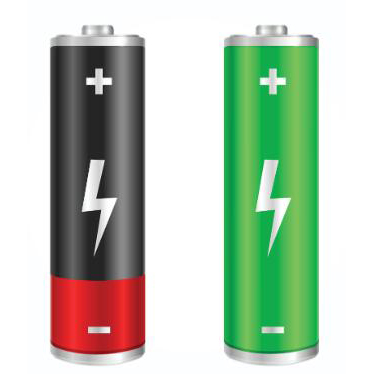电池能源

电池能源
Battery
Battery means a device capable of converting chemical energy into electrical energy in a portion of a cup, tank, or other container or compound container containing an electrolyte solution and a metal electrode for generating electric current. With positive, negative points. As technology advances, the battery refers to small devices that generate electricity. Such as solar cells. Battery performance parameters are electromotive force, capacity, specific energy and resistance. Using the battery as an energy source, a specific stable voltage, a stable current, a stable power supply for a long time, and a current that is less affected by the outside world can be obtained. The battery has a simple structure and a portable battery. The charging and discharging operation is simple and easy. The impact of stable and reliable performance in all aspects of modern life play a huge role.
Battery energy certification services products
A battery ordinary dry battery, alkaline zinc manganese battery, lithium manganese battery zinc silver battery, zinc air battery, lithium iodine battery ...
Secondary Nickel Battery Nickel-cadmium batteries, nickel hydrogen batteries ...
Mobile phone lithium battery lithium-ion battery, lithium polymer battery ...
Various Digital Secondary Battery Laptop Batteries, Digital Camera Batteries, Camcorder Batteries, Various Cylindrical Batteries, Wireless Communication Batteries, Portable DVD Batteries, CD & MP3 Players Batteries, Tablet Batteries ...
Lead Acid Battery Lead Acid Battery for Automotive Start-up, Fixed Lead Acid Battery, Small VRLA Battery ...
Battery energy certification testing standards
Before the world many countries and international organizations have introduced their own lithium battery safety standards and inspection requirements, which are widely used in a few standards are: (For more information and questions, please contact the letter Testers battery testing department)
IEC 62133 Edition 2.0 Secondary cells and batteries for alkaline or other non-acid electrolytes - Safety requirements for portable sealed secondary cells, and for batteries made from them, for use in portable applications);
IEC 61960 Edition 2.0 Secondary cells and batteries for alkaline batteries or other non-acid electrolytes - Secondary lithium cells and batteries - Secondary lithium cells and batteries - Secondary lithium cells and batteries - for portable applications
IEC 60950-1 Edition 1.0 Information technology equipment - Safety - Part 1: General requirements;
IEC 60086-4: 2007 Primary batteries - Part 4: Lithium batteries (Primary batteries - Part 4: Safety of lithium batteries);
UL 1642 Ed 4 Lithium Batteries;
UL 2054 Ed 2 Household and Commercial Batteries;
Section 38.3 Recommendations on the Transport of Dangerous Goods - Recommendations on the Transport of Dangerous (UNSW / AC.10 / 11 Rev.5 / Amend.2) Goods - Manual of Tests and Criteria, Rev. 5 / Amend. 2 Edition);
GB / T 18287-2013 "Lithium-ion batteries for mobile phones and batteries General Specifications";
JIS C 8714: 2007 "Battery for portable electronic devices, lithium-ion battery or battery safety test;
The above several major lithium battery standards were examined from different angles lithium battery safety and electrical properties, will now be classified as follows:
Detection methods and technical requirements of the corresponding standard
Product safety
Environmental adaptability
(Batteries, batteries)
Electrical properties
(Batteries, batteries)
Batteries
battery
GB / T 18287
Heavy impact
2. hot abuse
Overcharge
4. Forced discharge 5. Short circuit
Mechanical shock
7. Temperature cycling
Overcharge protection
2. Over discharge protection
3. Short circuit protection
1. ESD (Electrostatic Discharge)
2. Constant hot and humid
Vibration
Free fall
5. Low pressure
6. High temperature molded shell stress
1.0.2C5A discharge
2. Rate discharge
3. High temperature discharge
4. Low temperature discharge
5. Charges to maintain capacity and recovery capacity
6. Performance storage
7. Cycle life
8. Internal resistance
IEC 62133
1. Continuous charging
2. External short circuit
3 forced discharge
4. Forced short circuit
1. External short circuit
2. Overcharged
Free fall
2. hot abuse
3. squeeze (batteries)
4. Battery case stress
5. Transport (batteries)
6. High temperature molded shell stress
/
IEC 61960
/
/
/
1.20 ℃ discharge
2.-20 ℃ discharge
3. 20 ℃ high rate discharge
4 charged to maintain and restore
5. Long time storage
6. Cycle life
7. Internal resistance
8. Electrostatic discharge
IEC 60086-4
(GB8897-4)
1. External short circuit
2. Forced discharge
Not charging properly
4 wrong installation
Over discharge
1. External short circuit
2. Forced discharge
Not charging properly
4 wrong installation
Over discharge
Low pressure
2 temperature cycle
Vibration
Impact
Hit
6 squeeze
Free fall
8. Temperature shock
/
UN ST / SG / AC.10 / 11 Rev.5 / Amend.2 Section 38.3
1. External short circuit
2. Forced discharge
1. External short circuit
Overcharge
Low pressure
2 temperature cycle
Vibration
Impact
Collision / squeezing
/
UL 1642
1. External short circuit
2 is not normally charged
3. Forced discharge
1. External short circuit
2 is not normally charged
3. Forced discharge
Vibrate
Impact
3. Thermal shock
4 temperature cycle
Hit
6. Burning
Squeeze
8. Low pressure
/
UL 2054
1. External short circuit
2 is not normally charged
3. Forced discharge
1. External short circuit
2 is not normally charged
3. Charging
4. Forced discharge
5 limited power test
Vibrate
Impact
3. Thermal shock
4 temperature cycle
Hit
6. Burning
Squeeze
Dropped
9.250N stress test
10. Shell stress
11. Shell fire
/
JIS C 8714
1. External short circuit
2. Forced internal short circuit
1. External short circuit
2. Overcharge protection
Thermal shock
Squeeze



